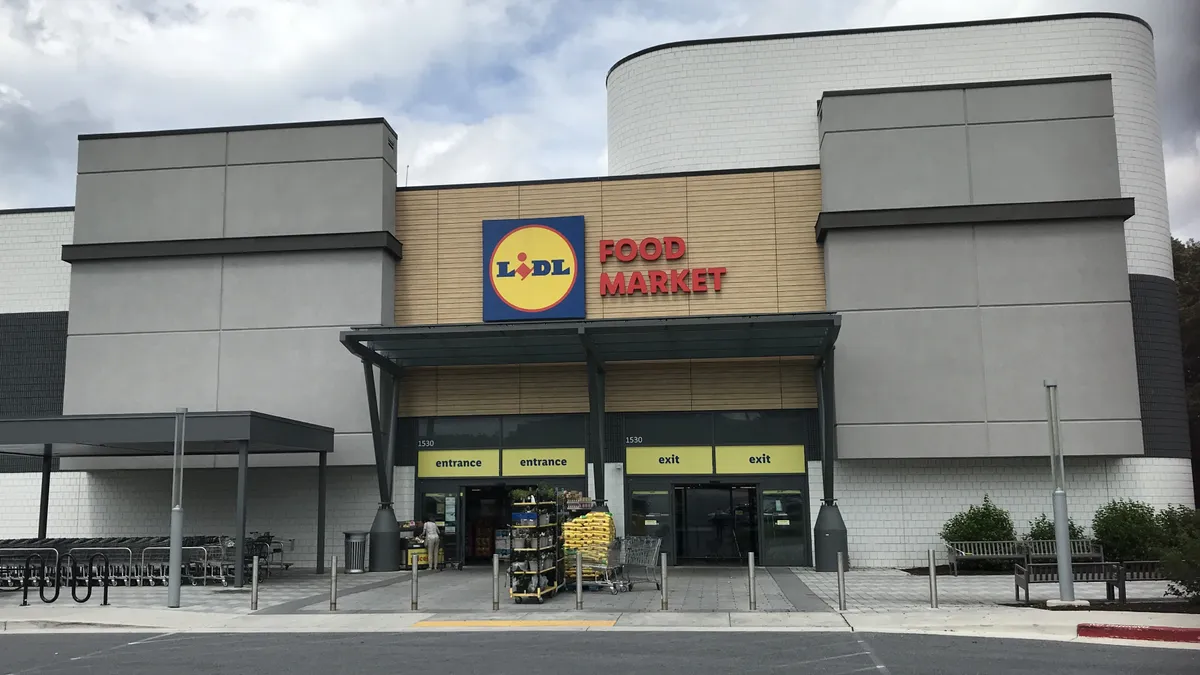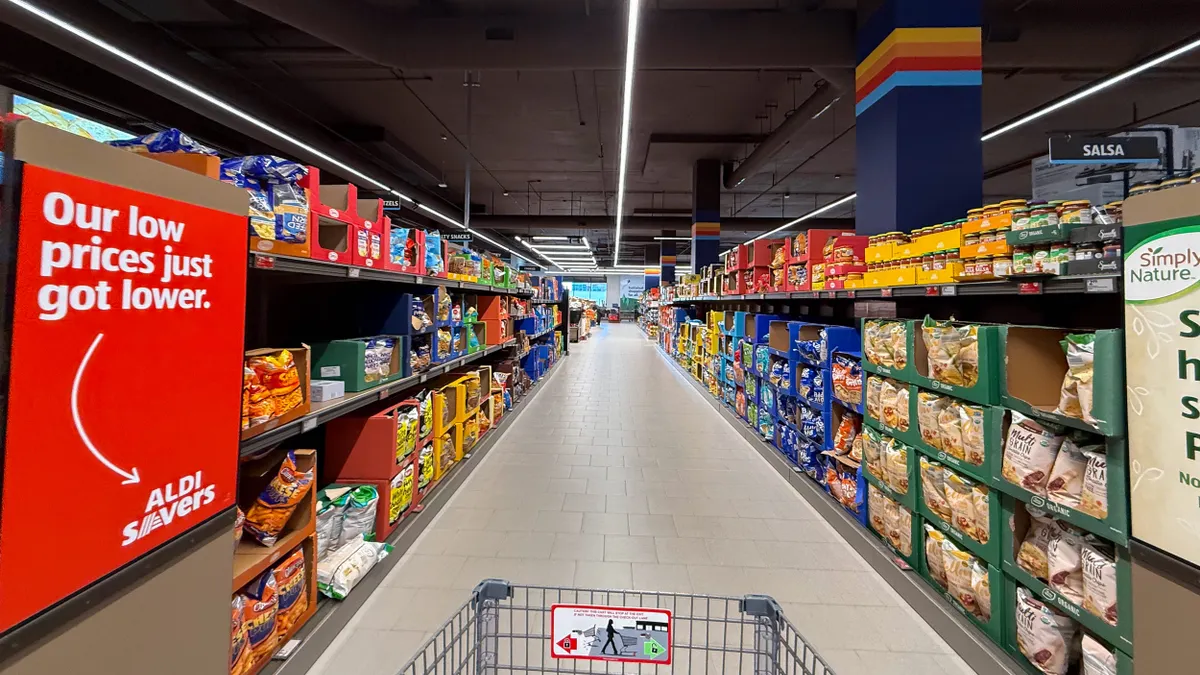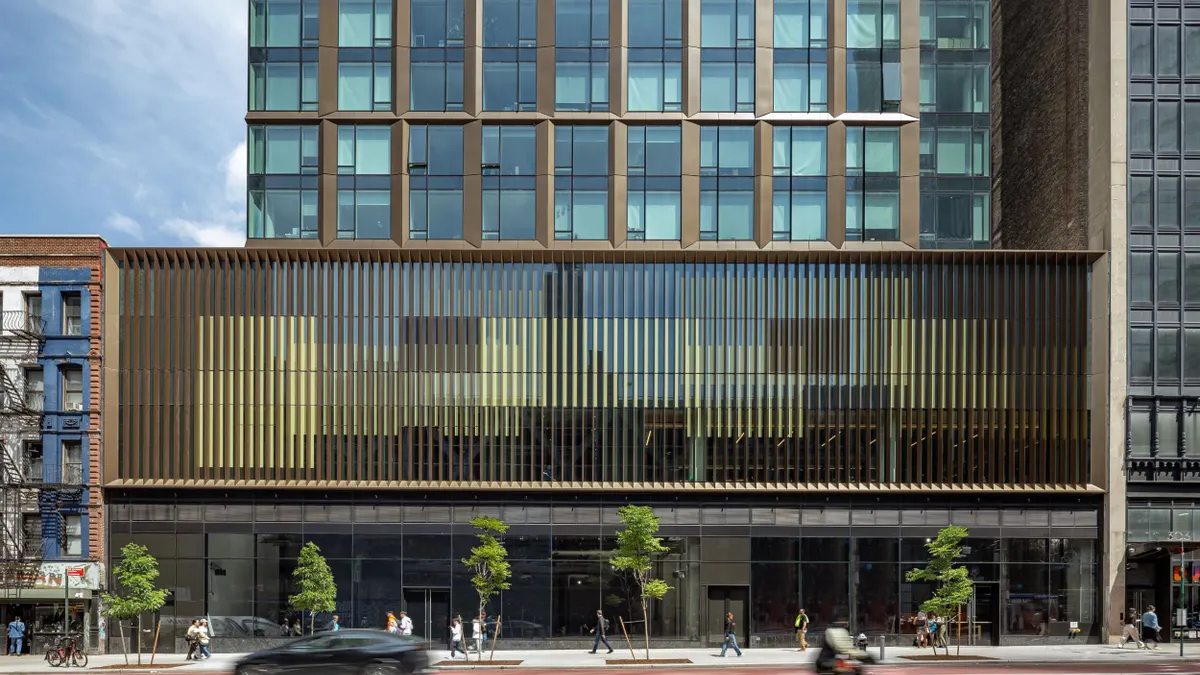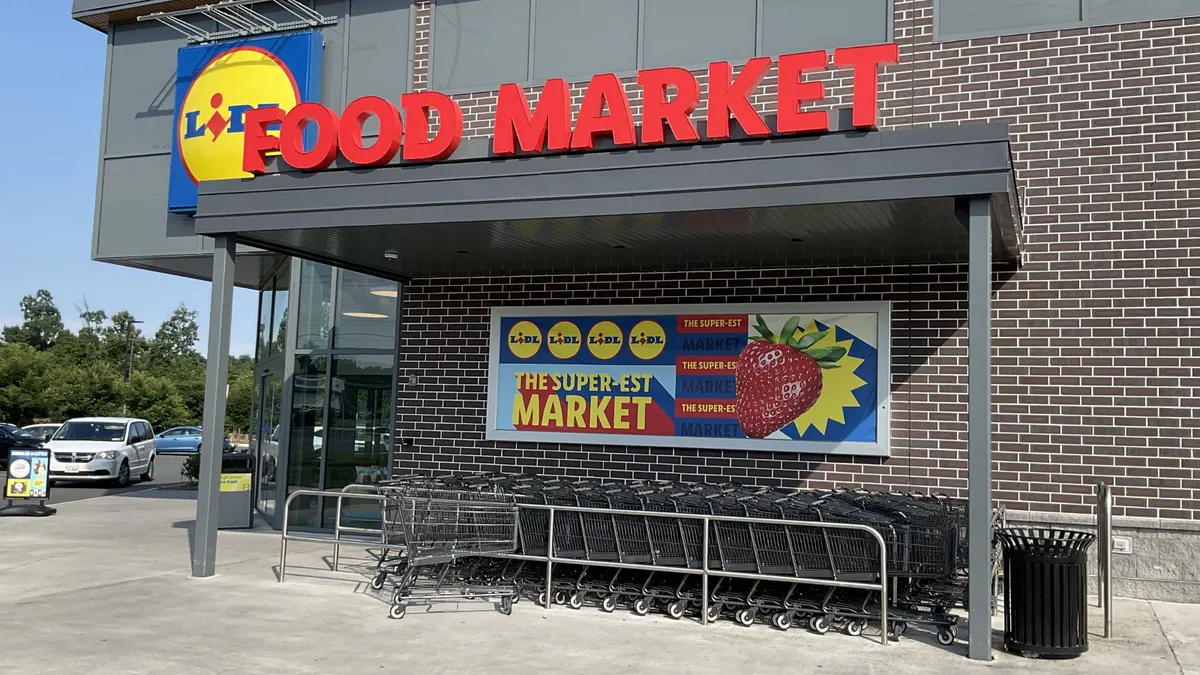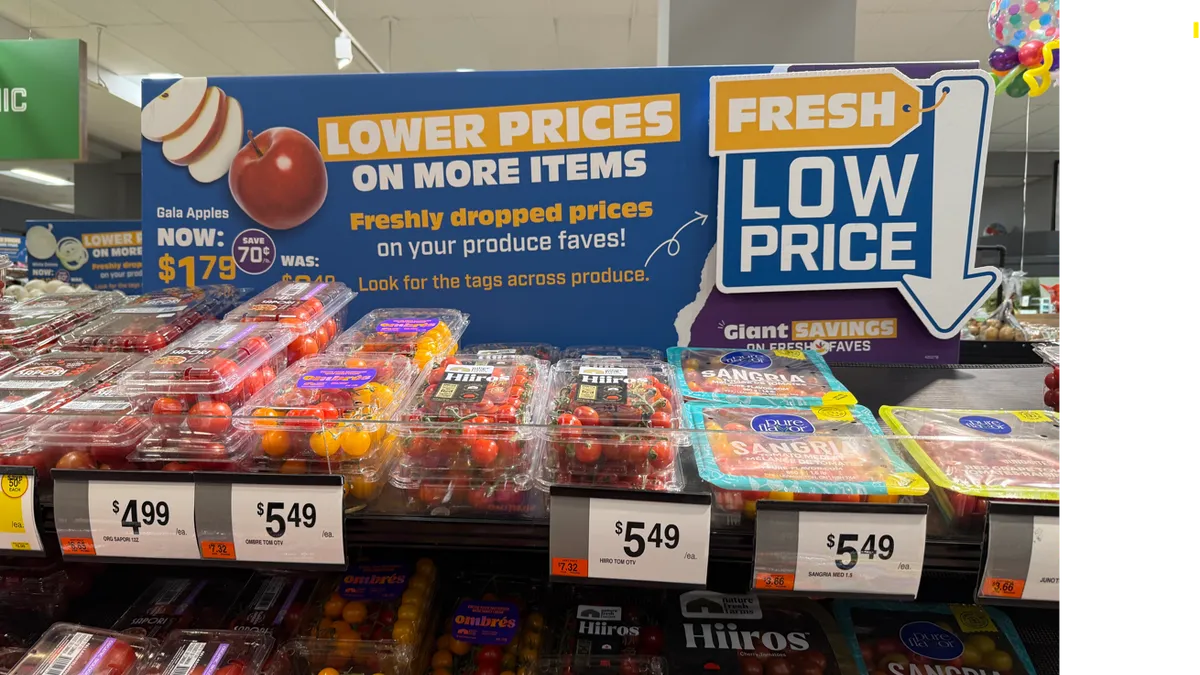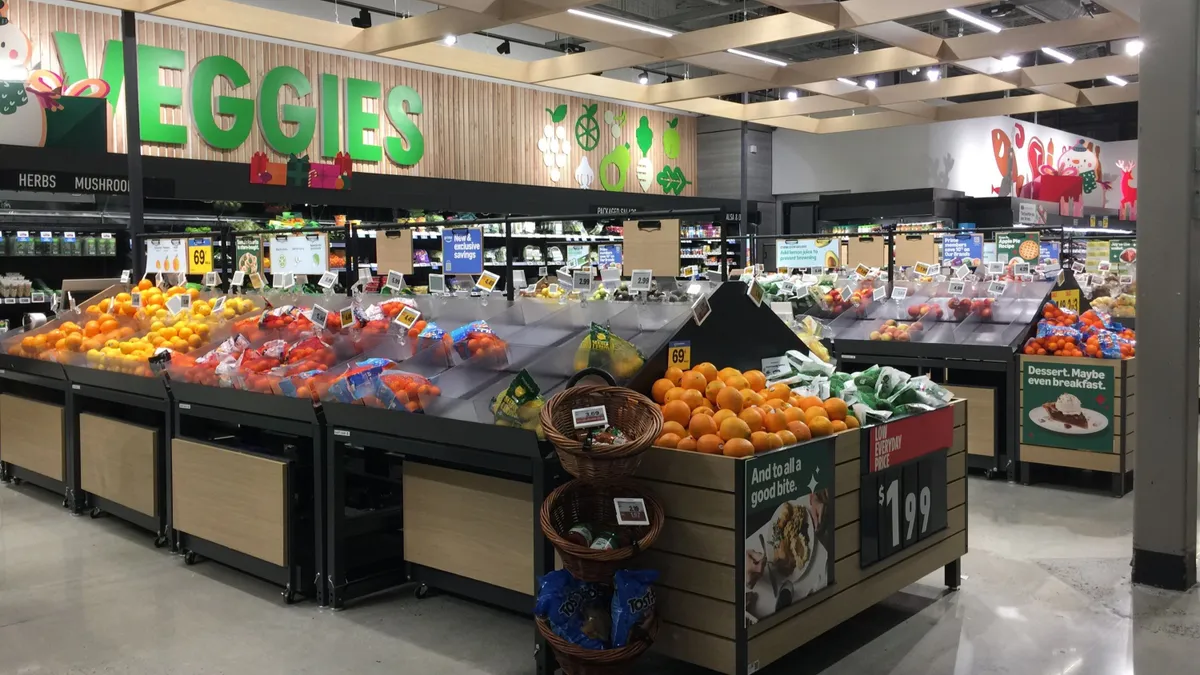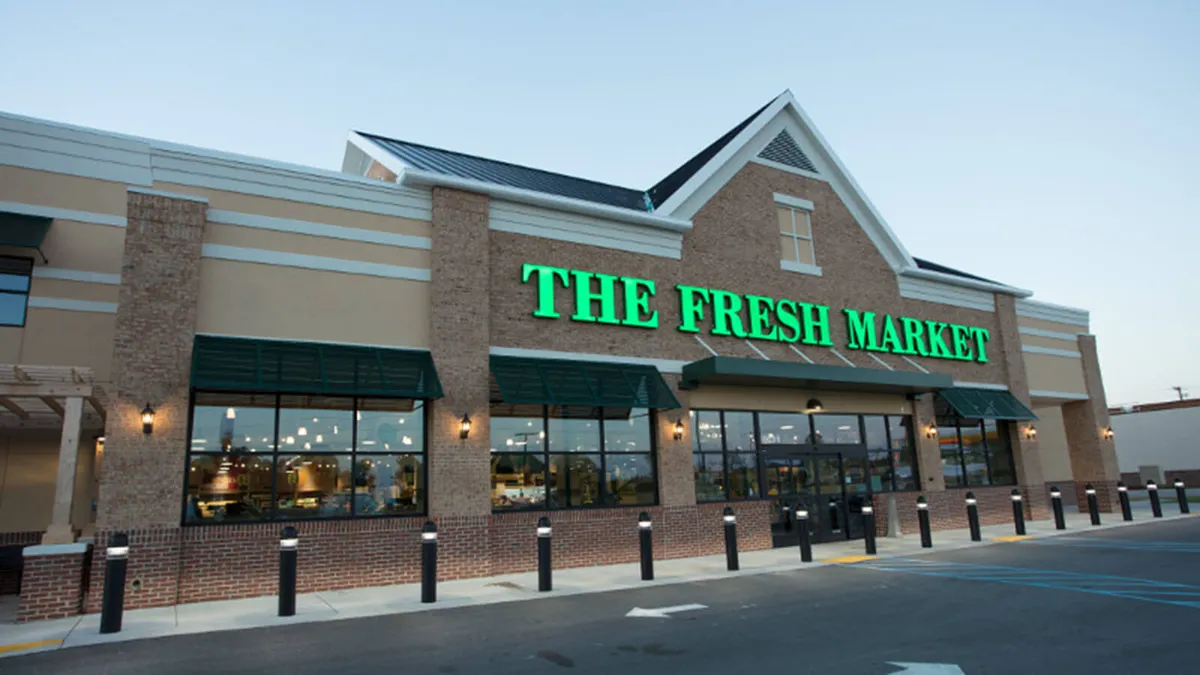When Lidl prepared to enter the grocery industry in the United States back in 2015, the German retail powerhouse seemed to have everything going for it.
Renowned across Europe for the potent mix of low prices and high-quality goods that defines its thousands of colorful stores, Lidl arrived stateside with deep pockets, a highly developed private label strategy and a disciplined focus on efficiently running a complex business in a highly competitive environment.
But instead of steadily growing its U.S. footprint as it had originally intended, Lidl US has moved ahead in fits and starts, prompting questions about why its value-focused business model has trouble gaining traction on American soil.
Lidl’s U.S. store fleet so far comprises only about 170 stores in nine states and Washington, D.C. Meanwhile, German archrival Aldi, which entered the U.S. in 1976, has accelerated its growth and now has almost 2,400 stores stateside.
While Aldi has continued to ramp up its growth, Lidl US has laid off hundreds of corporate workers during the past two years and closed a number of stores.
“They’ve given up so much opportunity over the past few years between the pandemic, people being out of work, looking for value” and dealing with inflation, Michael Infranco, assistant vice president of retail intelligence provider RetailStat, said about Lidl’s journey in the U.S. “These guys seem to have missed that boat, so they’re going to have to hitch their ride on another one.”
That time could be now, with throngs of shoppers across income levels flocking to discounters and mass retailers in search of more affordable grocery options.
Lidl US has new changes underway, including a broad update of its assortment, as it looks to adapt its model to better suit the U.S. consumer, Chief Customer Officer Frank Kerr said.
Focusing on ‘untapped potential’
After moving through several CEOs during its first years in this country, Lidl US last summer appointed its first American CEO, Joel Rampoldt, a former consultant who is serving as the company’s fifth chief executive.
In March, the company brought on a team of four new senior executives, including a new chief commercial officer and Kerr, its first chief customer officer.
Kerr acknowledged in an interview that Lidl is facing a considerable learning curve as it adapts to the U.S. market and said the company is closely examining its next moves in the U.S., a region that “is really untapped potential for us.”
Lidl sees itself as able to simultaneously meet the needs of shoppers looking for a limited assortment discounter or a traditional supermarket, Kerr said.
“We really see the opportunity to disrupt any market that we go in because quite frankly, we can appeal to a various amount of demographics and customers and quite frankly … really deliver on the value proposition, despite where their normal shop may be prior to us entering those markets,” Kerr said.
Kerr was a member of the team of executives that founded Lidl’s U.S. unit. He spent time working for the grocer in Germany and the U.K. ahead of the debut of its first U.S. stores in 2017. Kerr then left Lidl for Save A Lot in 2018, where he served as a regional director and later vice president of retail operations and wholesale sales before moving to Lidl International in 2022.
Lidl is developing a broad update to its assortment as it works to connect more deeply with shoppers in the U.S. Changes the company is working on include the introduction of freshly baked bagels to its signature in-store bakeries as well as a meat department overhaul linked to Independence Day.
Kerr said Lidl takes particular pride in its low-cost baked goods, pointing to its 79-cent baked-in-store croissants as an example of how it hopes to strengthen its relationships with U.S. shoppers.
Lidl’s dual focus on low prices and fresh food is a clear differentiator as it tries to build a stronger presence in the U.S., particularly among discounters, which tend not to put as much emphasis on fresh merchandise, said John Clear, senior director in the consumer and retail group at consulting firm Alvarez & Marsal and a former Lidl executive.
History of Lidl US
-
June 2015Lidl establishes its U.S. headquarters in Arlington, Virginia.
-
June 2015Lidl names Brendan Proctor as its U.S. CEO, replacing Kenneth McGrath, who was formerly with Lidl Ireland before becoming the Lidl US’ first CEO in 2013.
-
June 2017Lidl debuts first U.S. stores with plans to open 20 locations along the East Coast throughout the summer.
-
May 2018Johannes Fieber, formerly CEO of Lidl Sweden, becomes president and CEO of Lidl US, replacing Proctor.
-
November 2018Lidl US acquires Best Market Grocery Stores in New York and New Jersey, adding 27 locations.
-
May 2019Lidl US unveils plans to open 25 new stores across seven states by spring 2020.
-
December 2019Lidl agrees to buy six Shoppers Food & Pharmacy stores from United Natural Foods, Inc.
-
August 2020Lidl says it aims to add 50 new stores by the end of 2021.
-
June 2021Michal Lagunionek, formerly head of Lidl’s Poland division, becomes the new CEO of Lidl US, replacing Fieber.
-
February 2023Lidl US lays off roughly 200 employees, primarily workers at its Arlington headquarters.
-
July 2023Lidl reportedly closes 11 stores in six states.
-
August 2023Joel Rampoldt, formerly with consulting firm AlixPartners, becomes Lidl US’ fifth CEO in 10 years, replacing Lagunionek.
-
March 2024Lidl US names four new executives, including its first chief customer officer.
-
March 2024
Updated merchandising
Lidl is also tweaking how it merchandises products to account for the ways U.S. grocery shoppers stand apart from their European counterparts, Kerr said, noting that even a difference like the fact that U.S. consumers tend to have larger freezers is prompting Lidl to make adjustments.
“We’ve really had to take a deep dive in terms of how we adjust our pack sizes, what we have from a total assortment,” he said.
Lidl US also recently introduced garden centers at about 75 stores, with the final batch opening in late May. The centers helped drive strong Mother’s Day plant and flower sales for Lidl, according to Kerr.
“They really value that discovery component, and something like the garden centers just amplifies that,” Kerr said.
Kerr added that while Lidl US will make minor adjustments to what its stores offer to reflect local tastes, the retailer looks, whenever possible, to standardize its operations to take advantage of economies of scale.
“It’s extremely important that we focus on our organization’s DNA, which is leveraged through vertical integration and efficiency that we’re able to drive throughout our entire system, ultimately to save costs for the customer,” he said.
Kerr added that while Lidl is a private label-focused discounter, the company believes that its value proposition goes well beyond simply offering low prices and a high-quality assortment to providing a convenient shopping experience.
“Shopper views of value have really shifted. It’s not just the simple price and quality comparison,” he said. “There’s a much more complex matrix that goes into that equation of value.”
That approach reflects Lidl’s strategy in its home market of Germany, where the company has had to find ways to stand out against Aldi, which “still has the position of the image of the price leader,” said Sebastian Rennack, an international retail analyst who runs Aletos Retail Advisory.
“If you put them next to each other, I would say that Lidl is better in communicating quality while trying to keep up with Aldi when it comes to price,” Rennack said.
Kerr added that he intends to focus people’s attention on how its stores allow for quick shopping. “From our recent studies that we've done across our store, we know that our customers can do a full shop with us across our store in 17 minutes less than what they can do at our competition,” he said.
Lidl is also increasingly turning to its loyalty program, myLidl, to strengthen its relationships with U.S. shoppers through more personalized recommendations and recipe suggestions based on items people place in their carts, according to Kerr.
Lidl US’s footprint
Tackling barriers to entry
While Lidl’s approach to selling groceries has the potential to resonate on a large scale with U.S. consumers, the company is facing multiple challenges as it tries to steady itself in this country, according to Clear.
Those obstacles include high costs in their most promising markets, the perception among suppliers that Lidl is a startup and comparisons with Aldi, he said.
Clear noted that Lidl has performed quite well in regions like the New York City and Washington, D.C., areas where it has clusters of stores, but said high real estate costs in those markets are impeding the company’s growth. In addition, while costs are lower in other areas where Lidl also has a presence, such as North Carolina, South Carolina and Georgia, convincing shoppers in those areas to try an unfamiliar brand can be more difficult than further north, he said.
Lidl has built many of its U.S. stores “in areas where people are probably a little more skeptical of international brands coming into their space and they’re very heavily connected to legacy U.S. brands,” Clear said, pointing to The Fresh Market, Harris Teeter, Lowes Foods and Food Lion as examples.
“The cheaper real estate to acquire is in the markets where it’s tougher to convince customers to shop with you more regularly,” Clear said.
Infranco pointed out that Lidl has been stymied by placing stores across multiple regions instead of building its brand in a few specific areas.
“They spread themselves out too thin,” Infranco said. “They weren’t able to focus all their energies on building a name in an area that made people say, ‘Hey, this is great stuff.’”
To remedy that, Infranco suggested Lidl should step up its efforts to grow in areas — particularly suburban ones — where it has already put down roots rather than try to enter new markets.
Kerr declined to provide specific details about Lidl’s plans to open new stores or remake its store fleet.
“We see a tremendous opportunity in a lot of our core markets across the East Coast,” which include the New York City, Atlanta and Washington, D.C., areas, Kerr said. “But right now, we want to deliver on everything our customer expects from us when they walk into our stores.”
Lidl most recently debuted a new U.S. store on June 12, when it opened a location in Harrisburg, Pennsylvania.
In addition to coming up with a strategy for choosing optimal store locations, Lidl has to convince suppliers in the United States that it has the staying power to ultimately have a significant impact stateside, according to Clear.
“For a lot of U.S. vendors, they would look at it and say, ‘It’s great that you’ve got all these plans and you want to be a thousand-store retail chain, but at the moment you have 170, which puts you kind of in our small regional player book, which means you get small, regional player attention,’” said Clear, who formerly served as a buyer for Lidl US.
Compounding those issues is Lidl’s position operating in the shadows of Aldi in the U.S., where the companies are often thought of together even though they have had starkly different trajectories, Clear said.
Lidl’s growth in terms of its number of stores and sales might appear small compared with the growth Aldi has achieved in the U.S., but given that Lidl has been operating in this country for a far shorter period, directly comparing the two chains can be a stretch, he noted.
“They have extra pressure to be a game-changing market disruptor and change the whole face of grocery retail, which probably was never realistic in the first place,” Clear said. There’s “a very continuous conversation about the comparative performances between Aldi and Lidl in Germany, which creates pressure on U.S. leadership.”
While Lidl and Aldi are both discounters, Lidl appeals to U.S. shoppers with a higher median household income than Aldi does, data from Placer.ai indicates.
Rennack said a lot is riding on Lidl’s ability to succeed in the U.S. — and in standing up to Aldi — in part because Lidl’s operations in the multiple countries where it does business help support one another.
“Even if from an operations point of view it doesn’t make sense for Lidl to stay in the U.S.,” the company cannot afford to leave, he said.
Correction: A previous version of this story incorrectly stated that Lidl had opened an additional distribution center. The information has been removed.



